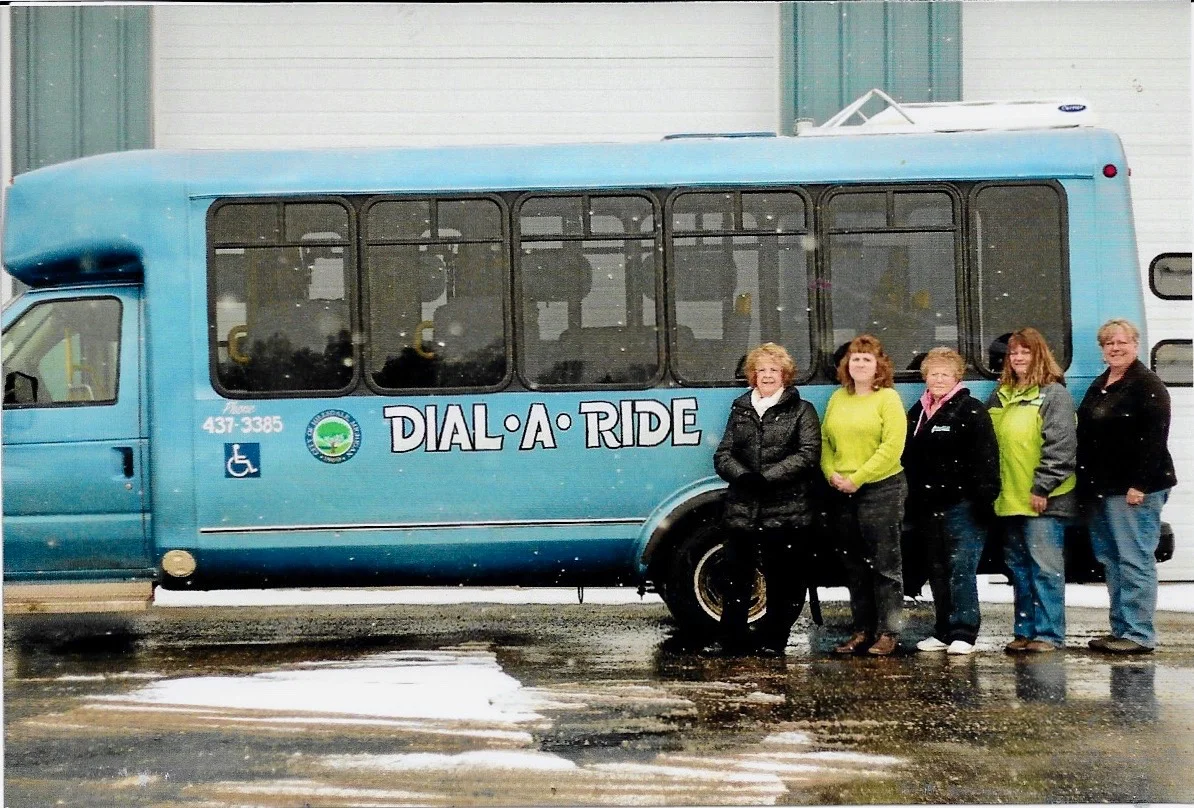Mass Transit, Hillsdale Style
The energy crisis, brought on by an oil embargo from the middle eastern oil-producing countries, hit our country in 1973. With the government anxious to conserve gasoline, grants to fund mass transit became available. The solution for rural areas was DART, Dial-A-Ride Transportation, a taxi service and bus ride combined.
Mass transit was seen as so important to counter the oil embargo that grants were available that provided 100% coverage for all capital and operating costs for the first year. The local community pledged $1,000 in “good faith” and agreed to continue the system for the following year if it was successful in the first year. Making the deal even sweeter, all the equipment that had been furnished by the government the first year could be purchased for $1. The only requirement was that the elderly and disabled would be served.
On Oct. 8, 1974 an operations contract between the city and John Wisely was signed, and Dial-A-Ride was in business. With three red vehicles (one with a lift) running twelve hours a day from Monday through Friday and one and one-half vehicles running a total of fifteen hours on Saturday, subsidized mass transit came to Hillsdale. Older people, those who were handicapped and lower income folks gained precious independence because they could plan their own lives and get places they needed or wanted to go. People from group homes at the Manor and on Mauck and Dewey roads got to their work at Key Opportunities on their own. With no public school buses running in the city, over 100 children daily rode to school for 25 cents. Groups of older ladies could plan to get a “do” at the Riggs Beauty School, shop at Touse’s and then have a snack at the Palace Cafe.
After the first year the government continued to fund about one-third of the cost and the city passed a 1 mill tax to keep the program subsidized. Despite only 3/4 mill requested in the second year, strong opposition to Dial-A-Ride threatened its existence. In the run-up to the election of Nov. 2, 1976, feelings ran high on both sides as to whether the city should fund the service. Letters to the editor in the Hillsdale Daily News devolved into incivility, with name-calling and accusations.
In the election 2,551 votes were cast on the proposal. It lost by 21 votes.
Mayor Herb Hine had already signaled his strong support for continuing Dial-A-Ride. If the millage failed he felt city funds could be found. It was a “brother’s keeper” response rather than one that respected the will of the people in a legitimate vote. However, Hine wasn’t alone. A well-organized campaign to put the millage on the February 1977 ballot was successful, and supporters vowed to pull out all the stops to be sure it would pass.
In the second vote the millage was approved by almost a 2-1 margin.
With a $200 billion deficit nationally by the 1980s, federal and state financial support decreased. Hillsdale, which had its own funding concerns, needed to pick up the slack. Since 1980, when the city took over responsibility for the administration of Dial-A-Ride from John Wisely and then Richard Dix, Council had wrestled with how to cut back costs. in 1982 fares were raised, most rides outside the city were eliminated and Saturday service ended. It wasn’t enough. City Manager Gregg Guetschow proposed that Council do away with Dial-A-Ride, replacing it with vouchers. These would be used by the elderly and handicapped to pay a private taxi company or the Key Opportunities bus for transportation. That didn’t sit well with those who used Dial-A-Ride. An active campaign encouraging residents to call their Council members urging continued support for the service ensued, and once again it was saved.
By its twentieth birthday Dial-A-Ride had become part of the fabric of Hillsdale. An editorial in the Hillsdale Daily News enthused about its contribution to the community and to fostering independence and convenience for so many: those from pre-school going to Head Start, students leaving school to get to orthodontia appointments, high school handicapped students going to lunchroom jobs in the elementary schools, older people going to lunch at the Senior Center, shopping and to medical appointments and physical therapy.
40th anniversary of Dial-a-ride: Judy Buzo, Sandy Young, Bert Tanner, Susan Kuhn, Cheryl Cox
Just as a national crisis—the oil embargo in 1973—gave Dial-A-Ride its start, another national crisis—the recession of 2009—gave Dial-A-Ride a permanent home. City Manager Linda Brown took advantage of a $200,000 grant through an Obama stimulus program called the American Recovery and Reinvestment Act. With it a new building on city land was erected and furnished at no cost to the city. On Feb. 10, 2010, after renting space since its inception, the program moved into its own bus barn on Development Road, just of Lake Wilson Road.
Funding for Dial-A-Ride now comes from governmental grants (never less than 50%) and users, with any difference between income and expenses picked up by the City’s General Fund. Capital purchases, mostly buses, are entirely funded by state and federal grants. With six buses at one time, there are now four blue buses, three full-time drivers and three on call. Service is limited to Monday through Friday from 7:15 to 4:15, but the cost of a ride remains amazingly low: kids over three and all students through high school, along with senior citizens and those with handicaps pay only $1.50, while adults pay $3 to travel within the city. For an additional $1.50 Dial-A-Ride will deliver passengers to doctors’ and dentists’ offices that are just outside the city limits.
And the gift of independence offered by Dial-A-Ride is priceless.
JoAnne P. Miller



